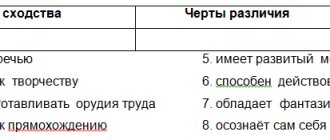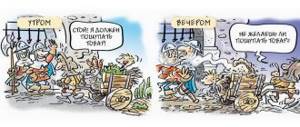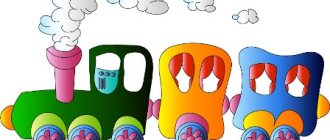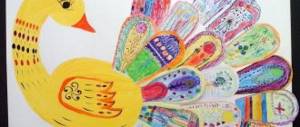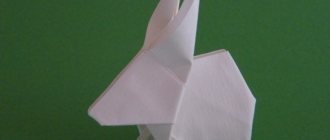Life in the World Ocean
The living world of the ocean is huge and diverse: more than 150 thousand species of animals and more than 10 thousand species of algae live in it. Even now, when land animals and plants have developed, there are much more of them living in the aquatic environment than on land. The largest animals live here, such as the whale, which is 25 times heavier than the elephant, the largest animal on land; the largest plants are algae, many tens of meters long. The conditions for the existence of all living things in water are much more favorable than on land: there are no sharp temperature fluctuations, the surrounding water well supports the body of the organism in space and it does not need such a powerful skeleton or roots as the inhabitants of the land, resisting the influence of the air elements.
In the organic world of the seas and oceans, floating animals and plants are distinguished - plankton and nekton, as well as benthos, i.e., a set of organisms living on the ground and in the ground of seas, lakes, and rivers. Benthos is divided into animal (zoobenthos) and plant (phytobenthos). More zoobenthos, especially in coastal shallow waters.
- Deep sea fish.
- Marine commercial algae and plankton. 1—kelp (“sea kale”); 2—ulva (“sea lettuce”); 3—chondrus; 4—crustacean plankton; 5—protozoa of bottom plankton.
Marine organisms are very diverse. These are mollusks, crustaceans, fish, etc. The bulk of phytobenthos consists of bacteria and algae. They form entire underwater meadows spread over a vast area. In our country, thickets of kelp and fucus algae are especially significant along the Murmansk, White Sea and Far Eastern coasts; they produce here an annual harvest of 200 tons per hectare on average. In shallow waters, where there is plenty of sunlight, blue-green algae live - very small plants that cover the stones with a slimy film. The largest brown algae live deeper - kelp, fucus, macrocystidae, etc. They attach to the bottom and form dense underwater forests. The deepest ones are red algae; they are also attached to the bottom, grow in small bushes, sometimes covering the bottom of the sea with a continuous carpet. Because of their color they are called crimson.
The next division of living organisms is plankton. They are not attached to the bottom, but are not able to actively move, but are only passively transported by currents. Phytoplankton, represented by algae, develops in the upper, illuminated layer of water. Zooplankton inhabit the entire water column. Crustaceans predominate in it, protozoa (radiolaria, foraminifera, ciliates), coelenterates (jellyfish, siphonophores, ctenophores), pteropods, etc. are numerous. Plankton serves as food for fish and many aquatic animals. In addition to the bulk of single-celled diatoms, large ones are also found among planktonic algae; they form extensive accumulations, for example, in the famous Sargasso Sea in the Atlantic Ocean.
Finally, organisms capable of actively swimming are nekton. They resist currents and move long distances. Nekton include fish, cetaceans, pinnipeds, turtles, penguins, squids, and water snakes.
Living conditions for organisms at different depths are not the same. In coastal shallow waters ( littoral
, littoral zone), where there are constant waves and surf, as well as ebbs and flows, which twice a day flood a coastal strip with a width of usually less than 1 km (in some places - 10-15 km), organisms have adaptations to alternating exposure to air and water, sudden changes in temperature, salinity, exposure to sun and surf.
In order not to be destroyed, mollusks, for example, are so firmly attached to the rocks that they seem to grow together with them, crabs are equipped with tenacious claws, and fish in the surf zone, such as gobies, have suction cup fins. Inhabitants of muddy and sandy shallow waters—shrimps, bivalves, starfish, etc.—burrow into the ground. At depths from 200 to 2000 m, within the continental slope, there is the so-called bathyal zone ( bathial
).
It occupies 20% of the area of the World Ocean and has significant slopes; here there are weak seasonal temperature fluctuations, the flora is poor due to the almost complete absence of light, animals, mainly fish, transitional to deep-sea, are often associated with the ground. Even deeper is the abyssal zone ( abyssal
), where the depth is more than 2 km. This is the bottom (bed) of the oceans in the form of flat hilly plains, basins, plateaus and mountain ranges. Water in the abyssal region is inactive with a constantly low temperature (1-2°C, in high latitudes - below 0°C), constant salinity (34.7%), density and almost complete absence of light. Vegetation - bacteria and algae. The deep-sea fauna is unique. The body of animals is delicate, fragile, with thin long appendages to ensure swimming or increase the support area on viscous soil. Some have no eyes, while others have very large eyes. Many organisms glow. Predators are capable of swallowing animals larger than their own size. In 1957, a Soviet hydrobiological expedition on the ship Vityaz explored the deepest Mariana Trench. With the help of tubes and trawls, she extracted silt from this greatest depth in the world at 11,022 m. And in 1960, the Swiss scientist J. Piccard in the bathyscaphe "Trieste" sank to a depth of 10,919 m in the Mariana Trench. Powerful searchlights helped the scientist get acquainted with life taking place in complete darkness and at a pressure of 1000 atm; he saw living creatures that looked like flat fish.
For oceanographic research, a bathyscaphe is used - a deep-sea autonomous self-propelled vehicle. It is controlled by the crew inside it. Many designs have been created. All bathyscaphes consist of a float body, a steel gondola with control equipment, an air regeneration system, a radio station, an ultrasonic telephone, a television camera, scientific instruments, a device for taking soil samples, photographic and television equipment. The bathysphere has the same purpose - a spherical chamber with equipment and a cabin for the crew, but lowered on a cable from the side of the ship.
G
Life at shallow depths is studied using plankton nets
.
They are designed in such a way that they can be closed together with living organisms and water samples at any depth. They also use bottom grabs
,
dredges
and
trawls
, which are lowered on cables using winches and pulled along the bottom, collecting benthic organisms. In such a dredge, a metal frame with knives moves along the bottom to cut and collect organisms into a mesh bag attached to it. Heavy soil tubes lowered on cables penetrate into the loose sediments of the bottom and collect columns of silt up to 30 m long. Such soil columns serve scientists as one of the sources of information about ocean life and its history. Hydrostats, steel chambers in which an observer immerses himself, are also widely used to study the sea.
The biological wealth of the seas and oceans is of enormous economic importance. They are a significant source of food. Fish, whales, seals, crustaceans, mollusks - all these are foods rich in fats, vitamins and proteins. Proteins and fats can be obtained from algae, especially from chlorella: from 1 hectare up to 40 tons of its dry matter are obtained, from which 20 tons of complete protein and 6 tons of fat are obtained. Likewise, the small krill shrimp, found in countless quantities in the oceanic waters of the southern hemisphere, can provide significant industrial yields of animal protein and fat. Although the biological resources of the World Ocean cannot be considered inexhaustible, they conceal even greater reserves, which humanity is just beginning to use.
